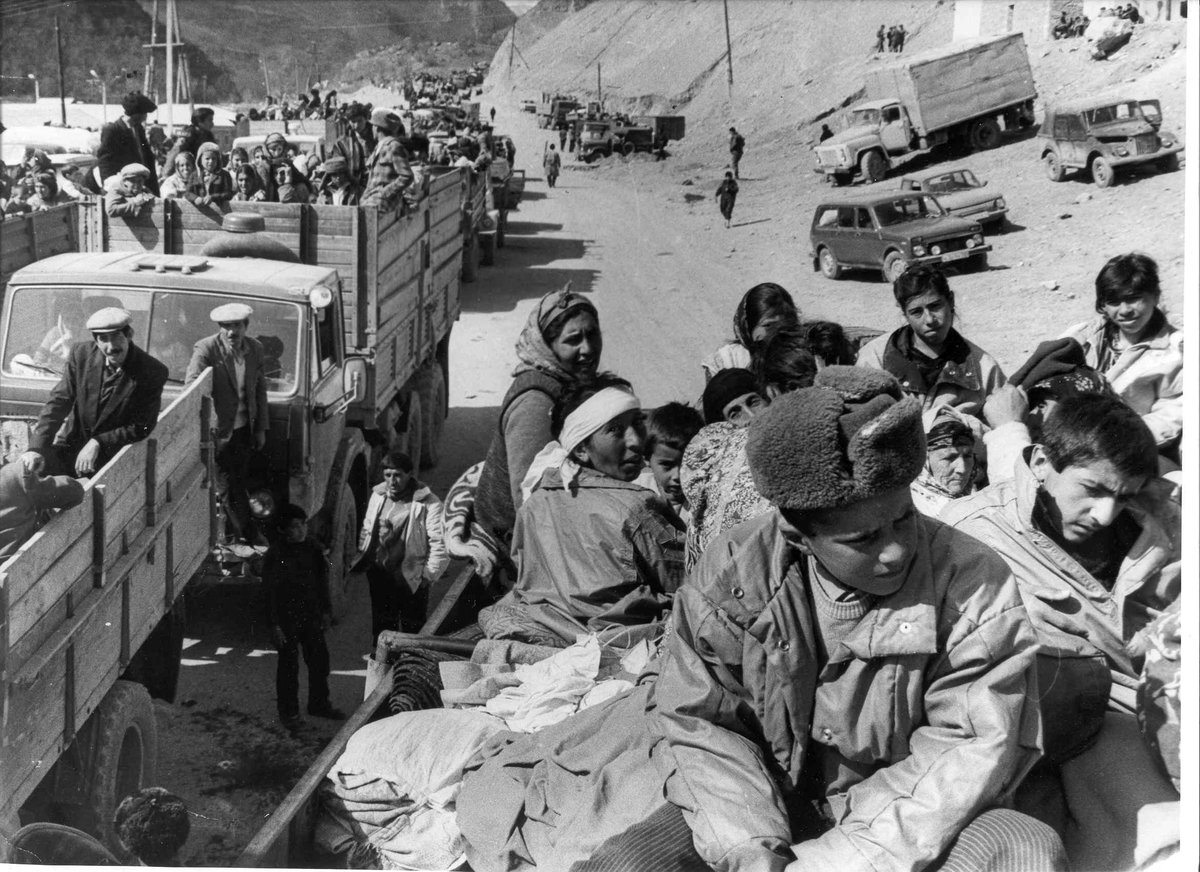1 A THREAD about Kelbajar. Today was billed as a momentous day for Kelbajar region with Armenian forces scheduled to withdraw from lands they have held since April 1993 + control restored to Azerbaijan. However the timetable has been extended, perhaps to ease potential trouble
2 Personally I think of my friend photographer Khalid Asgarov from Kelbajar. I used several of his pictures in my book (where I spelled his name Halid Askerov.) He had come to rescue his father and was there as Armenians moved in. Here is a picture by Khalid of the mass flight.
3 In 2017 @bbcwitness interviewed Khalid. He tells the story of how the only escape route for thousands was by foot across the Murov Mountains. Livestock perished and people froze. Listen to the story of how he walked with his father for two days. https://www.bbc.co.uk/sounds/play/p04y7szn
4 The Askerovs' house burned-- and also Shamil Askerov’s priceless library of Kurdish history. Thomas Goltz was also in Kelbajar in 1993, but got out by helicopter. This is his unforgettable account in Azerbaijan Diary.
http://www.zerbaijan.com/azeri/kelbajar.html
http://www.zerbaijan.com/azeri/kelbajar.html
5 The elder Askerov died in 2005 in Baku. In exile he tried but mostly failed to keep Kurds and their heritage alive after the loss of Kelbajar. This area was briefly “Red Kurdistan” in the 1920s before the USSR persecuted Kurds and erased their culture.
6 More than a million people have been displaced by the NK conflict since 1988. Now the people of Kelbajar (1989 pop, 57,800) are given an unlikely hope of return. But let's be realistic—the occupied territories were basically levelled in the '90s. Rebuilding will take years.
7 Kelbajar will be the most difficult region to resettle. It has Armenia to the west, NK to the east, the Lachin Corridor to the south. The Murov mountains to the north into the rest of AZ are impassable for much of the year. It's a massive challenge. Many will not return.
8 For Armenians reading: As you may ask, yes, I also pray that it will be possible for Armenians displaced in this war somehow to return safely to homes in Hadrut, Talish, Mataghis etc--although that looks incredibly difficult in current circumstances.
9 I also share grave concerns about what the Azerbaijani authorities could do to the 12th century Dadi Vank monastery in Kelbajar region and its many khachkar stone-crosses and inscriptions. (I’m working on a separate piece about cultural heritage issues, more on that soon).
10 The false theory that Karabakh’s churches are “not Armenian but Albanian,” has entered the mainstream political discourse in AZ and has bad implications for inscriptions like these. Here is a picture I took of Dadi Vank in 1998, with an ironic caption.
11 One more point about the handover of Kelbajar today. It was the capture of Kelbajar in 1993, followed by the first UNSC resolution on NK, that caused Turkey to close the border with Armenia.
12 In 1993 Turkish PM Demirel told negotiator Jirair Libaridian that they had closed their eyes to other Armenian military actions hitherto, but the capture of Kelbajar was a step too far. This is Libaridian’s description of their conversation in my book Great Catastrophe.
13 The return of Kelbajar to AZ control removes the formal impediment to reopening the border and then normalization of ARM-TR relations. Of course, that prospect is unthinkable in Armenia at the moment, given Turkey’s role in the recent war. No Armenian leader will think of it.
14 But the promised handover does open up possibilities in the future of ARM-TR normalization -- most likely with a new government in a post-Erdogan Turkey. So not something for today, but a glimmer of hope for the future. ENDS

 Read on Twitter
Read on Twitter




